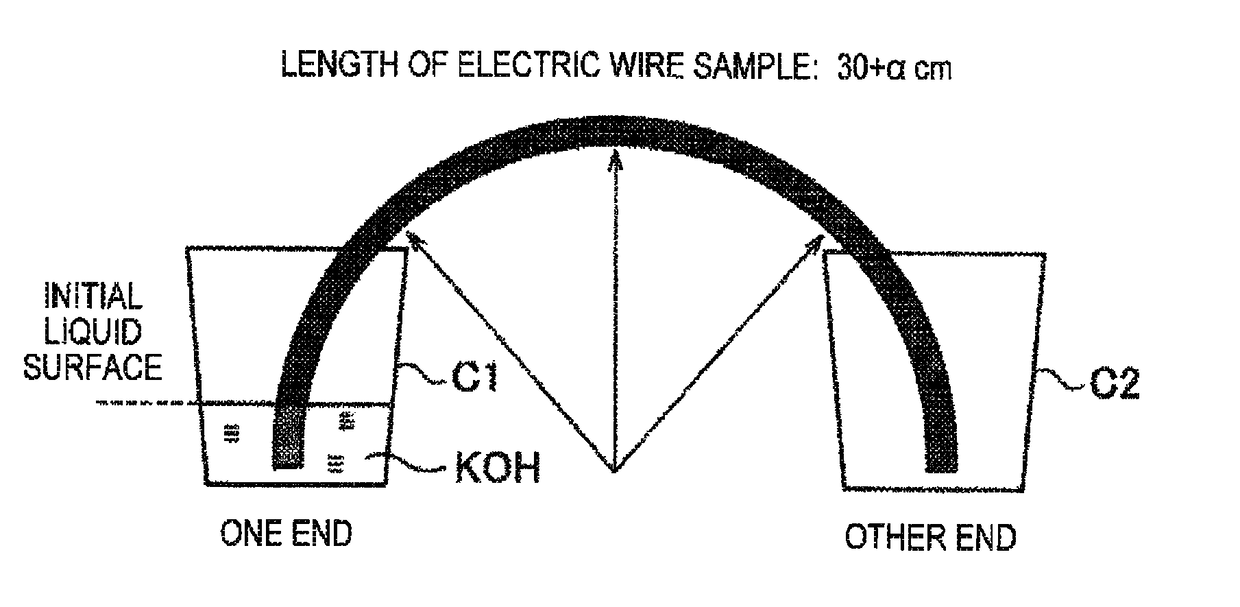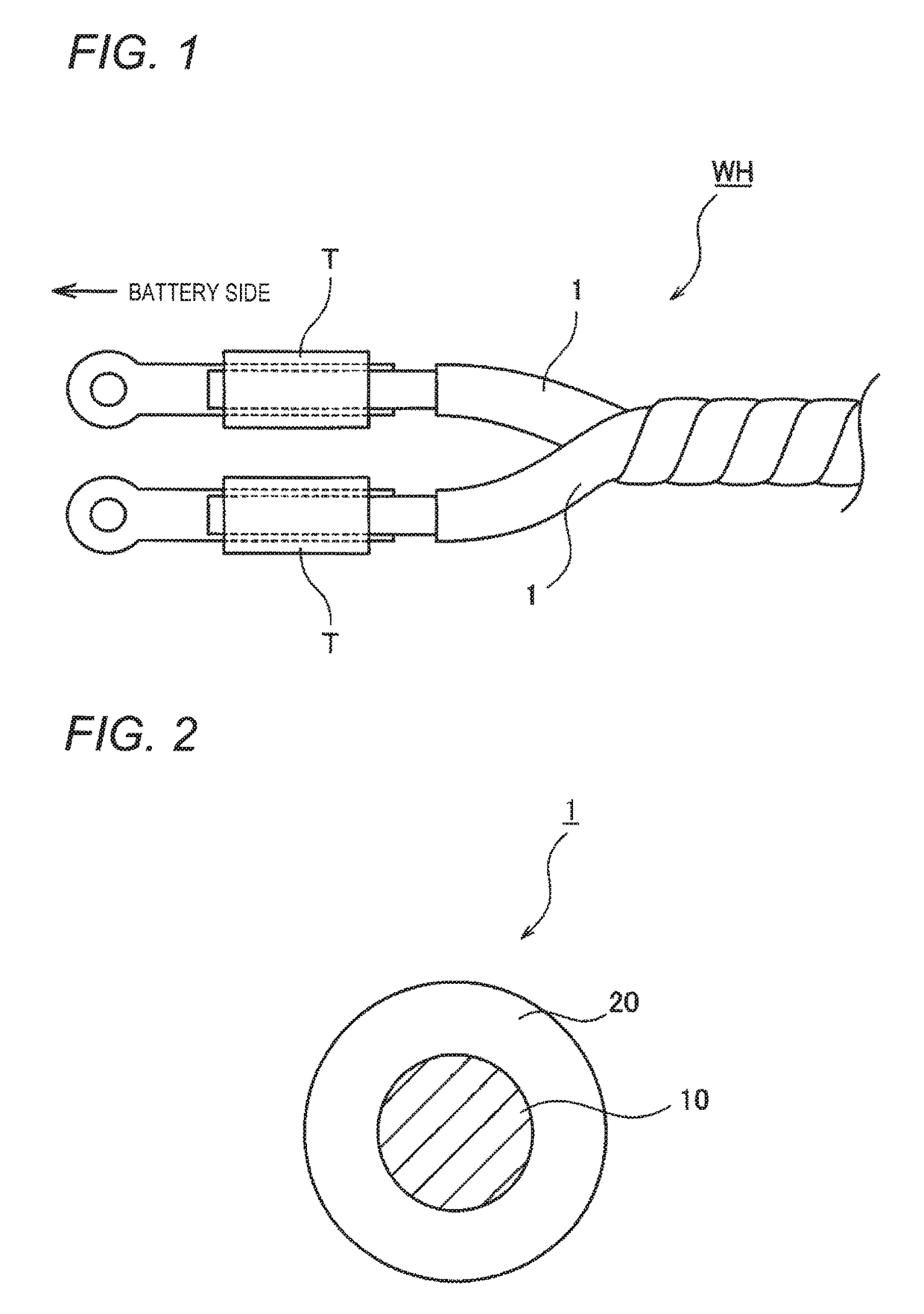Battery routing electric wire and wire harness
a wire harness and battery technology, applied in the direction of batteries, cables, insulated conductors, etc., can solve the problems of reducing the possibility of device breaking, reducing and preventing the increase of the number of processing steps
- Summary
- Abstract
- Description
- Claims
- Application Information
AI Technical Summary
Benefits of technology
Problems solved by technology
Method used
Image
Examples
Embodiment Construction
[0027]Hereinafter, a preferable embodiment of the invention will be described with reference to the drawings, but the invention is not limited to the following description and can be appropriately changed within a range without departing from the spirit of the invention.
[0028]FIG. 1 is a view of a wire harness including a battery routing electric wire according to an embodiment. As illustrated in FIG. 1, a wire harness WH is configured of at least one battery routing electric wire 1 and another component (at least one of an electric wire of the same type or different types, a terminal, a connector, a tape, and a corrugated tube), and, in the embodiment, is configured to include a plurality (two) of battery routing electric wires 1. The plurality of battery routing electric wires 1 are collectively tape-wounded.
[0029]Such a wire harness WH includes, for example, LA-terminals T at end portions of at least one side of the battery routing electric wires 1, the LA-terminals T are connect...
PUM
| Property | Measurement | Unit |
|---|---|---|
| traveling length | aaaaa | aaaaa |
| traveling length | aaaaa | aaaaa |
| length | aaaaa | aaaaa |
Abstract
Description
Claims
Application Information
 Login to View More
Login to View More - R&D
- Intellectual Property
- Life Sciences
- Materials
- Tech Scout
- Unparalleled Data Quality
- Higher Quality Content
- 60% Fewer Hallucinations
Browse by: Latest US Patents, China's latest patents, Technical Efficacy Thesaurus, Application Domain, Technology Topic, Popular Technical Reports.
© 2025 PatSnap. All rights reserved.Legal|Privacy policy|Modern Slavery Act Transparency Statement|Sitemap|About US| Contact US: help@patsnap.com



